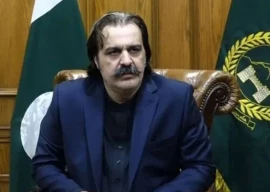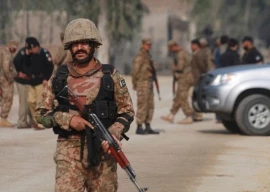
More than 50 years down the line, the city's inhabitants crave transport. To remedy this, the Sindh government passed the long awaited Sindh Mass Transit Authority (SMTA) bill in 2016.
A look at Karachi's mass transit problems
Another half-a-century old dream that inched closer to fruition in 2016 was the federal government-funded Green Line Bus Rapid Transit (BRT) system that is meant to run from Surjani Town till Tower on a segregated lane. Alongside this is the Orange Line BRT, which will run from Orangi Town till Board Office, where it will join the Green Line track.
There is a hope that the Karachi Circular Railway (KCR) may also be revived in 2017 as the federal government has decided to transfer the major share of the Karachi Urban Transport Corporation (KUTC) - which is responsible for the operation of the KCR - and the project has now been included in the China-Pakistan Economic Corridor.
Early failures
The city's first mass transit system was developed by the East India Company before independence. Rather than upgrading the system, abrupt decisions, mismanagement and lack of political will, according to urban planners, became the reasons for the system's suspension soon after the creation of Pakistan, which then led to complete transport anarchy in the city.
Later, Merz Rendel Vatten Pakistan or the 'Greater Karachi Plan' was developed for the city in the 1950s, in which mass transit was a key component. However, this also slipped into oblivion.
In 1962, the KCR was initiated but was later abandoned. Japan International Corporation Agency carried out a study in the city and identified six different corridors for the city's mass transit system. However, the government failed to implement the idea.
The price Karachi pays for its inefficient public transport system
Why so hasty?
In Karachi, projects have two speeds - so slow that they take a lifetime to see the light of the day or in such haste that residents must then repent at leisure. Apparently, the rapid construction of the two BRT Lines - Orange and Green - initiated in 2016 is a bid to strengthen political votes.
The officials of the federal government's Karachi Infrastructure Development Company Limited (KIDCL) who are responsible for the construction of the Green Line in the metropolis have accepted that they need to complete the construction of the Green Line before the 2018 general elections. Likewise, the Sindh government-funded Orange Line will bolster the Pakistan Peoples Party's vote bank in Orangi Town.
Where is the operational plan?
"These BRT lines are the requirement of 2030," said former director-general (DG) of the Karachi Mass Transit Cell, Malik Zaheerul Islam.
What is missing, he said, is the operational plan. "Subsidies will be a huge question," he said, adding that rather than constructing all the lines so fast, the government should form a proper policy on how to run these lines effectively in the city and make them sustainable.
Is the Sindh government geared up?
Meanwhile, SMTA DG Muhammad Athar has assured that the Sindh government is very much aware of the issues related to the BRT. According to him, the Sindh government will complete the construction of the Orange Line by June, 2017, but will make it operational alongside the Green Line.
Athar said the KIDCL is facilitating them in developing an Integrated Intelligence Transportation System, which is an online public information programme that will also have centralised command and control system and automatic fare collection system for all the BRTs. "For a year or two, the government will have to provide the subsidy," he said, explaining that later they will self-finance and, for that, they are exploring non-fare revenue.
It has yet to be seen how the Sindh government will effectively carry out these mass transit projects with the current political turmoil in the city. Will these colourful lines also slip into chaos and become casualties of the city's ongoing political tussle?
Published in The Express Tribune, December 31st, 2016.

















COMMENTS (1)
Comments are moderated and generally will be posted if they are on-topic and not abusive.
For more information, please see our Comments FAQ